1. Do you need to catch and hold the frog?
If not, please consider admiring it from afar.
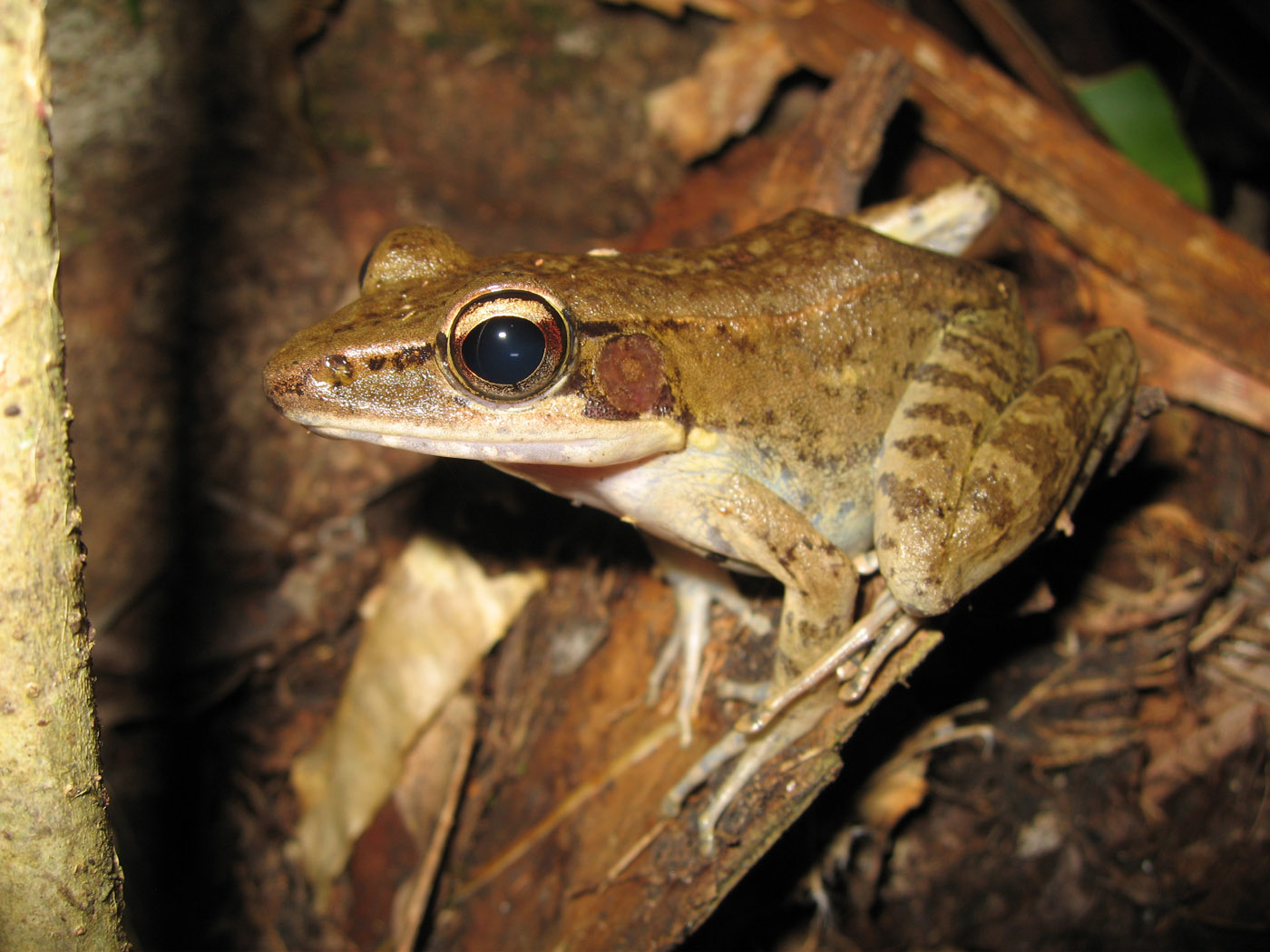
Rana grisea female, Papua New Guinea. All the Papua New Guinea photos on this page were taken by SAVE THE FROGS! Founder. Dr. Kerry Kriger in January 2007.
2. Protect The Frog
Assuming you truly need to catch and/or hold a frog, you should do it in a way that minimizes pain, stress, disease transfer, moisture removal and chemical contamination.
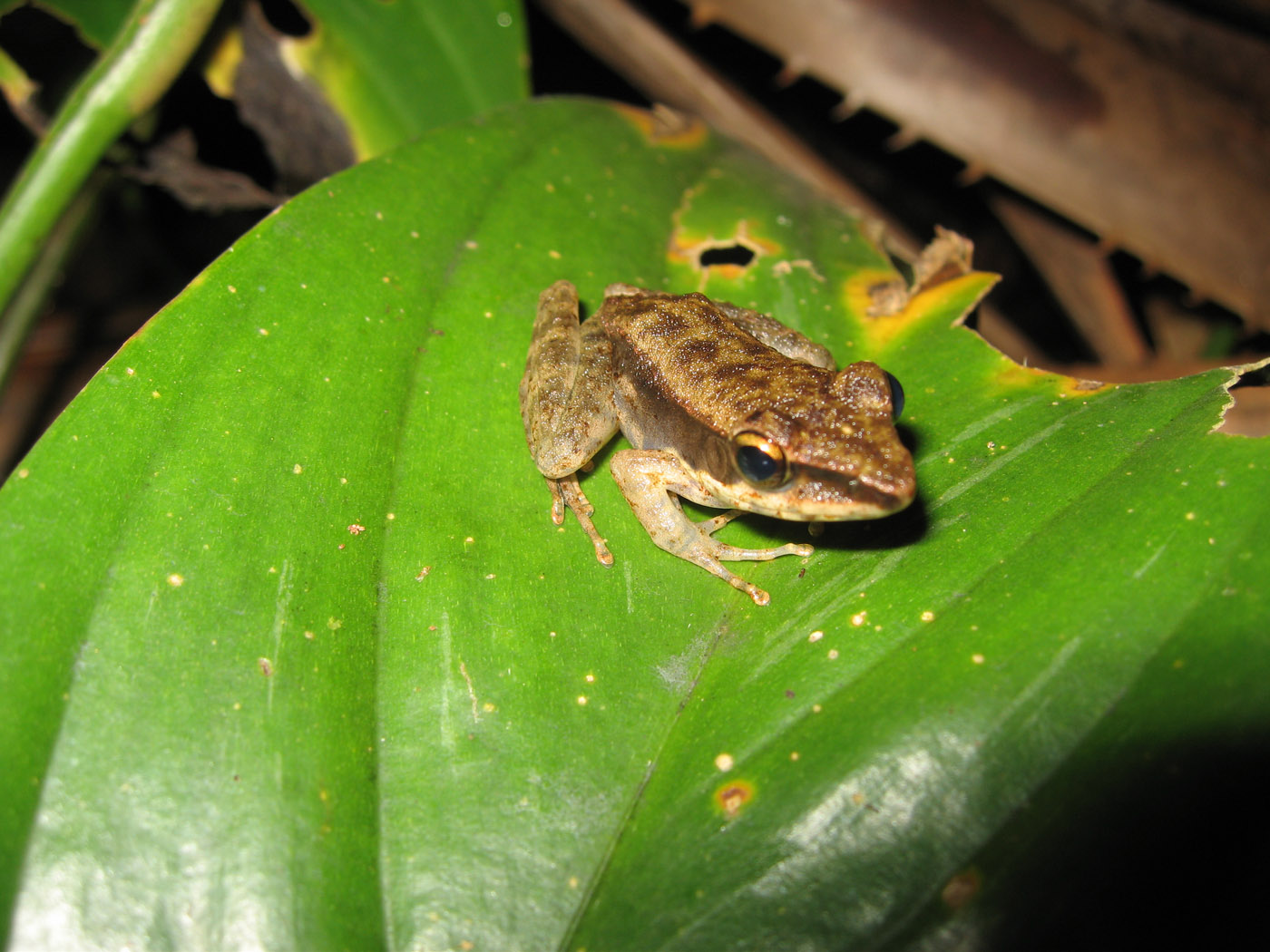
Rana grisea again
3. Use A Plastic Bag
You probably found that frog at the mating pond and you don’t where it’s been or who it’s been amplexing…or who it’s been amplexed by…so use protection whenever possible! Be prepared with a 20 x 25 cm plastic bag — that’s a standard sandwich bag with no zip. It will keep you clean and keep the frog clean. It has the added benefit of helping you catch the frog without it slipping through your fingers. It’s way easier to catch a frog with a bag wrapped around your hand then using your bare hands. A large frog will require a larger bag. You may be able to accomplish everything you need to do without handling the frog any further…just inspect it through the plastic.
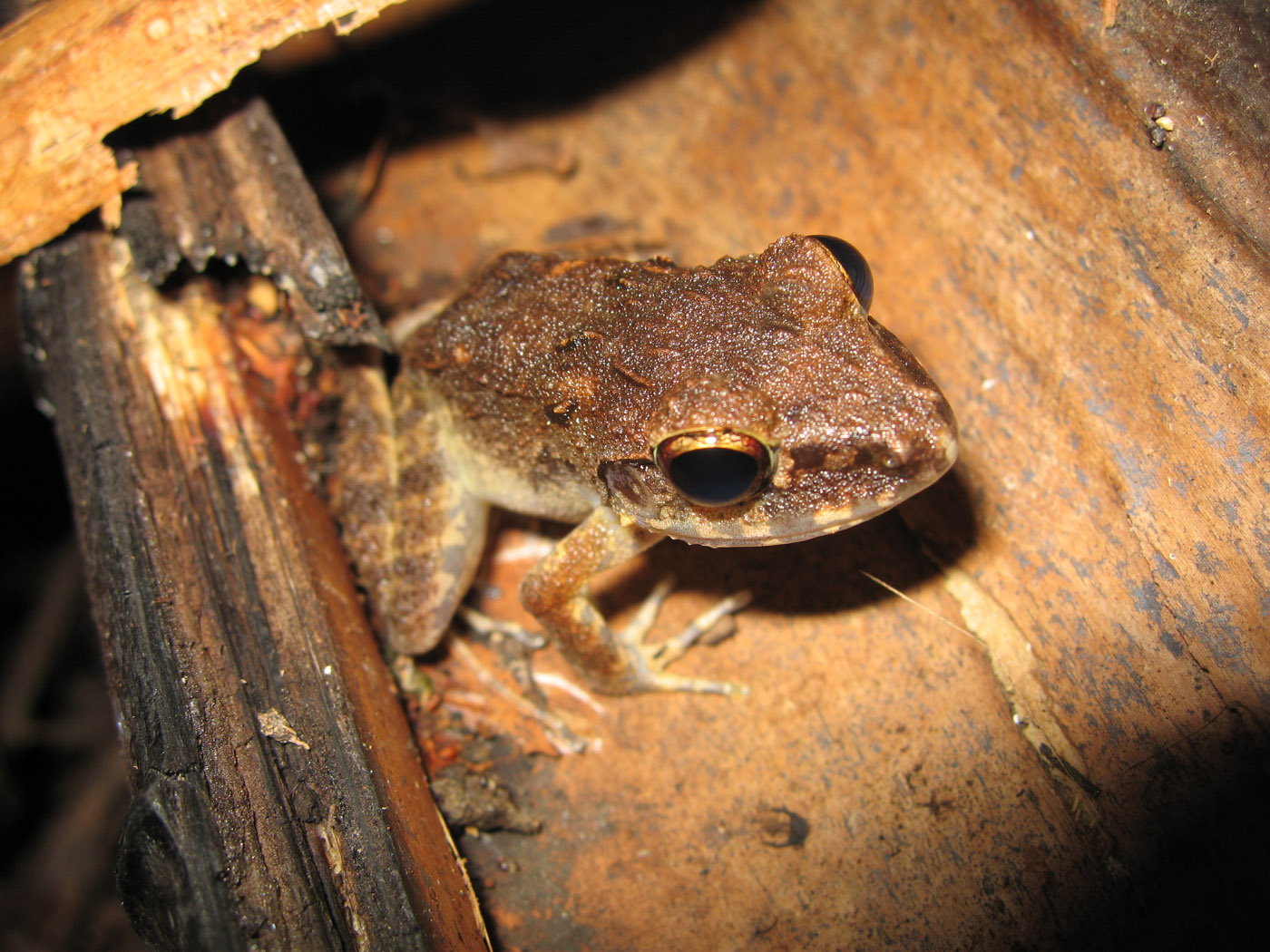
Plattymantis papuensis, Papua New Guinea
4. If You Find Yourself Without Protection
If you are without bags or gloves, make sure your hands are clean (no mosquito repellent, perfume or sunblock) before catching the frog.
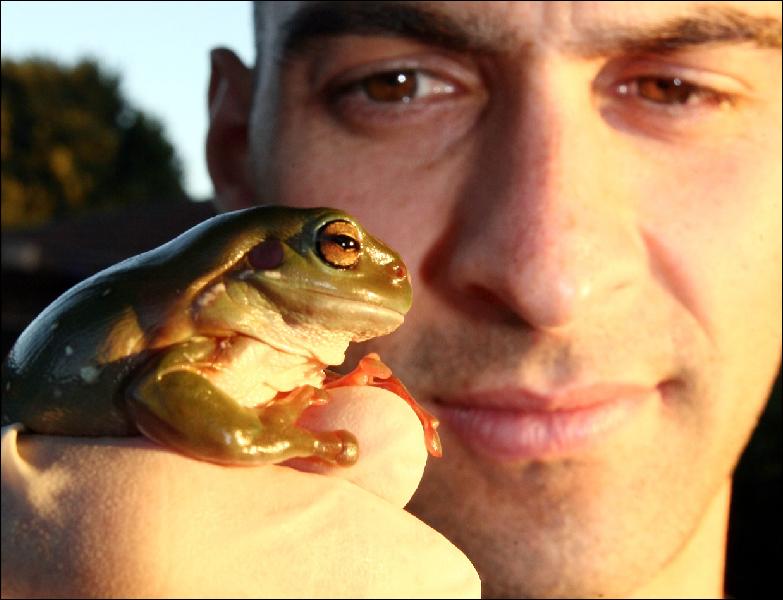
SAVE THE FROGS! Founder Dr. Kerry Kriger in Australia with a Green Tree Frog (Litoria caerulea) on his gloved hand.
5. How To Hold The Frog
Do you need to hold the frog? If so, read on. Now that the frog is in the bag, make sure it’s head is pointed towards one of the bottom corners of the bag so that it has nowhere to jump when you open the bag. Now put a powder-free lab glove on your right hand. Here’s how to carefully gain control of the frog: from the outside of the bag, use your left hand to gently extend the frog’s legs outward from its groin area, and then your right hand’s thumb and index finger to hold the frog’s two legs at the point between its knees and ankles. Once you have the frog under control you can remove it from the bag, head facing down. It is now hanging downward and should not be kicking or trying to escape because it is dangling and has nothing on which to grasp.
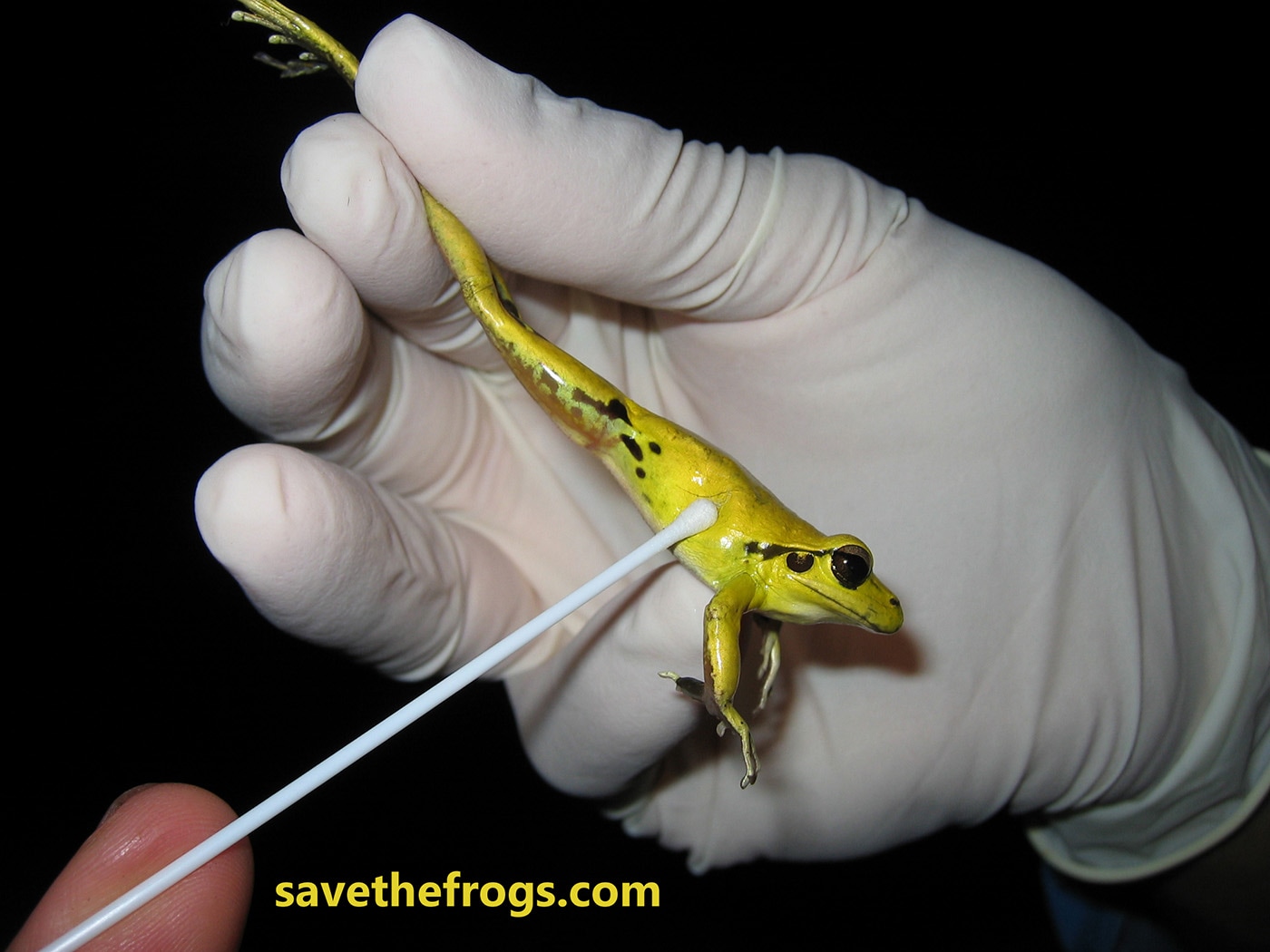
SAVE THE FROGS! Founder Dr. Kerry Kriger swabbing a Stony Creek Frog (Litoria wilcoxii) in Southeast Queensland, Australia during his Ph.D. research on chytridiomycosis. Note that both legs are stabilized by placement of the thumb and index finger between the frog’s knees and ankles. The frog is calm and cannot hurt itself or escape.
5a. How To Hold A Large Frog
If it a large frog, you can just wrap your hand around the frog’s waist, head outwards, legs towards your elbow.
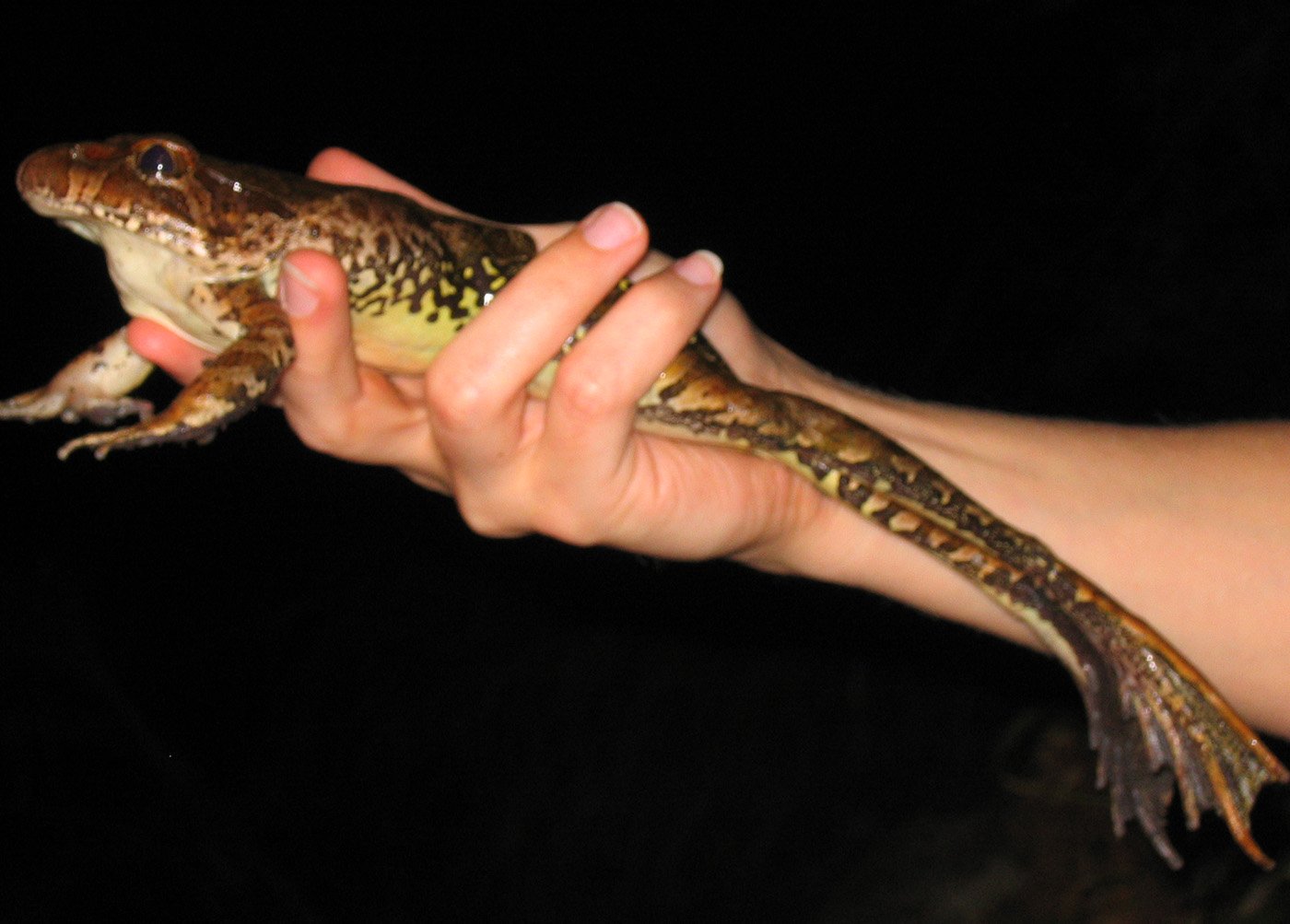
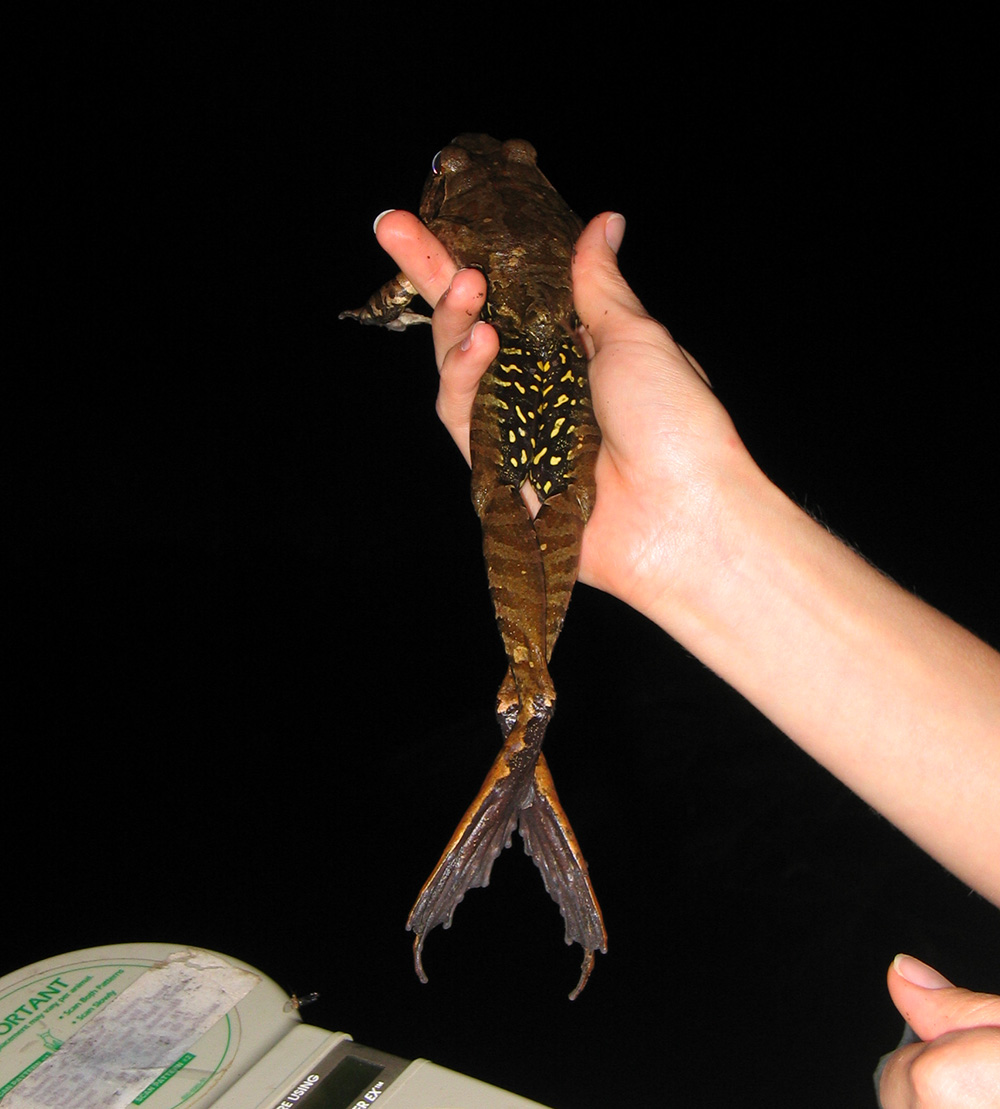
Giant Barred Frog (Mixophyes iteratus) in Australia.
6. Be Gentle
Don’t hold them by one leg because they will kick and twist.

White-Lipped Treefrog (Litoria infrafrenata), Papua New Guinea
7. Free. Free. Set Them Free.
Let them go free as soon as possible.

The same White-Lipped Treefrog, preparing to jump.
8. Bid Them Farewell With Some Moisture
If it’s a dry night, pour some water over the frog so it continues on its way nice and moist. This is only necessary if it is very dry out.

Litoria eucnemis, Papua New Guinea
Happy Frogging!
If you enjoyed this article, please leave us a tip!
Do you want to be informed when we add photos and videos describing how to catch and hold a frog? If so, please sign up for the SAVE THE FROGS! Newsletter!
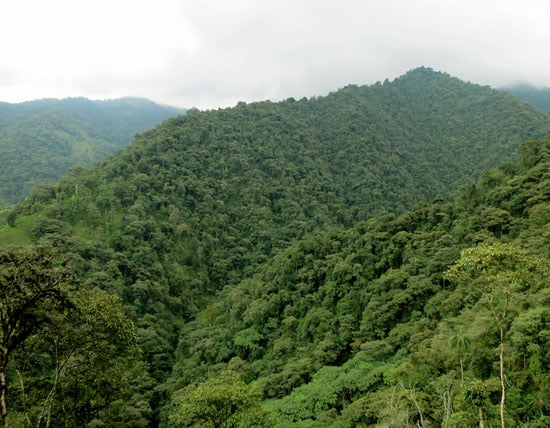
Frog habitat near Mindo, Ecuador.


